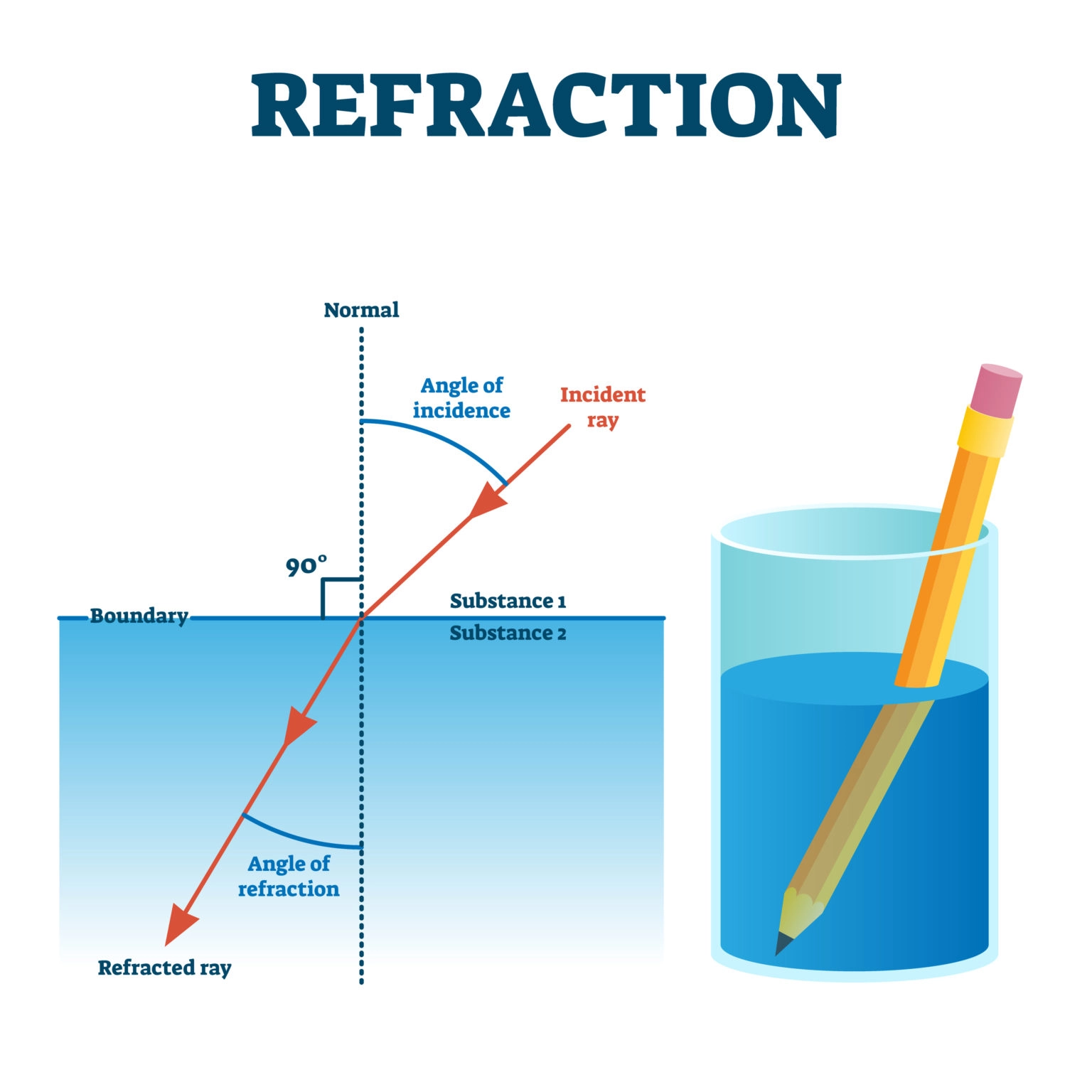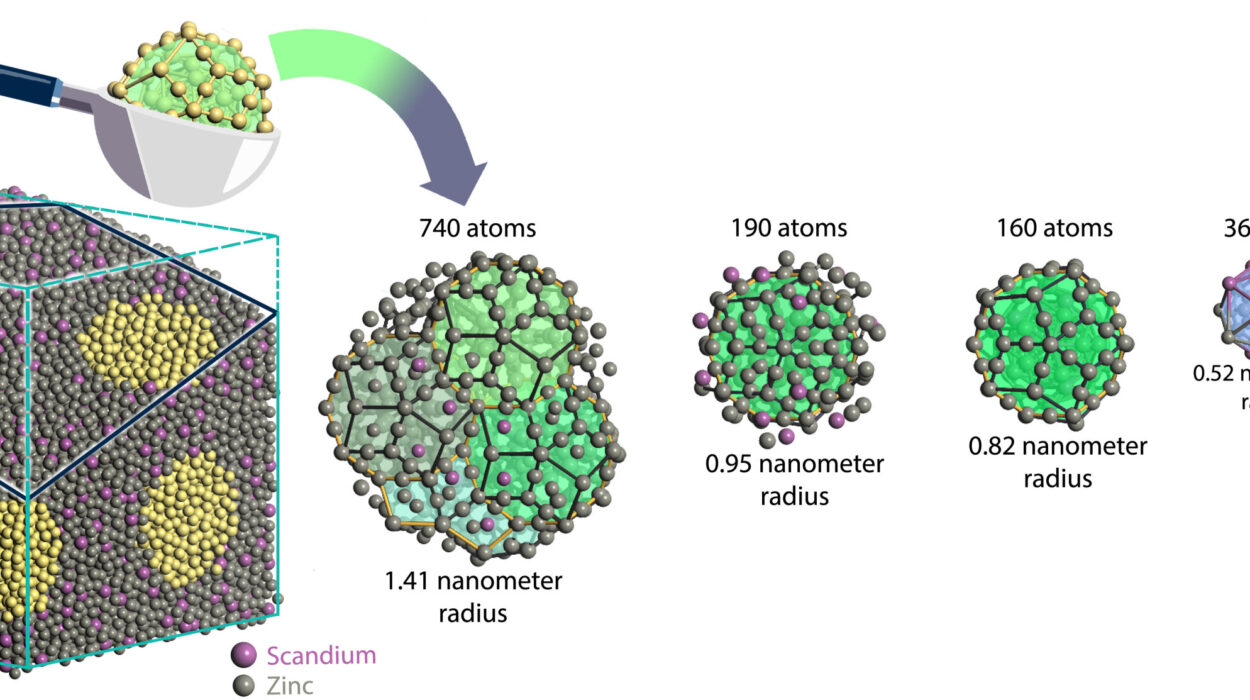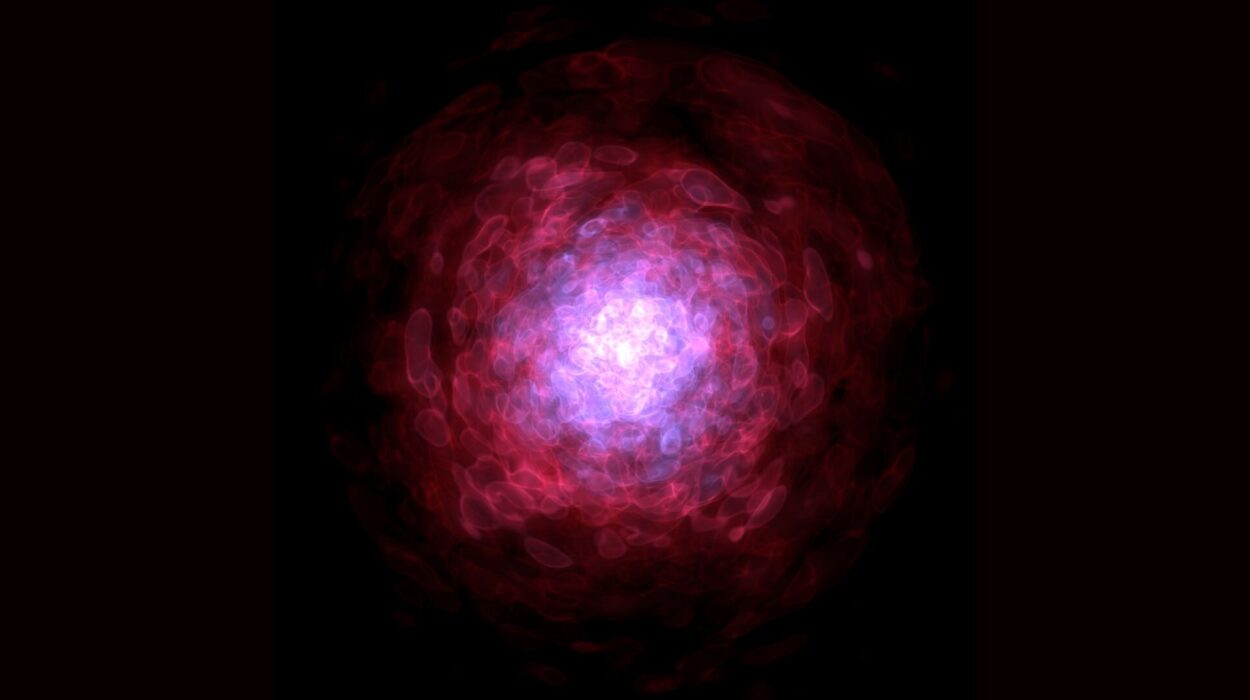Refraction is one of the fundamental phenomena in physics that governs how light behaves when it travels through different materials. At its core, refraction is the bending of light as it passes from one medium to another with a different density or optical property. This bending is not just a curious quirk but a window into understanding the wave nature of light and the intricate relationship between energy and matter.
Imagine you are standing at the edge of a pool and you peer down to see a coin resting at the bottom. Surprisingly, the coin appears to be shifted or bent from its actual position. This visual trick is a direct consequence of refraction. It also explains why objects submerged in water seem closer to the surface than they really are. But why does this happen? What is the underlying physics that governs the bending of light? This article embarks on a journey to explore the concept of refraction in depth — its causes, laws, applications, and the fascinating science behind it.
The Nature of Light: Wave or Particle?
Before diving into refraction, it’s essential to understand the nature of light itself. For centuries, scientists debated whether light was a wave or a particle. This debate culminated in the 20th century with the development of quantum mechanics, revealing that light has a dual nature: it behaves both as a wave and as discrete particles called photons.
When considering refraction, the wave model of light provides the most intuitive explanation. Light propagates as an electromagnetic wave, oscillating electric and magnetic fields traveling through space. This wave nature allows light to interact with materials, slowing down or changing direction depending on the properties of the medium it enters.
What Happens When Light Enters a New Medium?
When light travels from one medium to another — say, from air to water or from glass to air — its speed changes because the optical density of the medium changes. Optical density refers to how much a material can slow down light compared to the speed of light in a vacuum.
In a vacuum, light travels at its maximum speed — approximately 299,792 kilometers per second. But when it moves into a medium like water or glass, it slows down because photons interact with the atoms and molecules in the material, being absorbed and re-emitted or scattered, causing a delay in their travel.
This change in speed causes the light wave to bend at the interface between the two media. The amount and direction of bending depend on the relative speeds of light in the two materials.
The Law of Refraction: Snell’s Law
The mathematical description of refraction is captured by Snell’s Law, named after the Dutch mathematician Willebrord Snellius, who discovered it in the early 17th century. Snell’s Law provides the precise relationship between the angles of incidence and refraction and the refractive indices of the two media.
Snell’s Law is expressed as:
n₁ sin θ₁ = n₂ sin θ₂
Where:
- n₁ is the refractive index of the first medium,
- θ₁ is the angle of incidence (the angle between the incoming ray and the normal),
- n₂ is the refractive index of the second medium,
- θ₂ is the angle of refraction (the angle between the refracted ray and the normal).
The refractive index, n, is a dimensionless number that quantifies how much light slows down in a medium relative to vacuum. Air has a refractive index close to 1, water around 1.33, and typical glass around 1.5.
This law tells us that when light passes from a less dense medium (lower n) to a more dense medium (higher n), it bends towards the normal line (the perpendicular to the surface). Conversely, when light goes from a more dense to a less dense medium, it bends away from the normal.
Visualizing Refraction: The Light Ray Model
Though light behaves as a wave, it is often practical to use the ray model to visualize and predict its path. A light ray is an imaginary line that represents the direction in which light energy travels. When a light ray strikes the boundary between two media at an angle, it splits into two rays: the reflected ray, which bounces off the surface, and the refracted ray, which passes into the new medium but changes direction.
Imagine shining a flashlight into a clear glass of water at an angle. The light entering the water slows down and bends toward the normal, altering its original path. If you look closely, you will notice a shimmering effect or the displacement of objects submerged in the water. This bending is refraction in action.
Why Does Light Bend? The Wave Explanation
At the microscopic level, the bending of light is tied to its wave properties. When a wavefront approaches a boundary between two media at an angle, parts of the wavefront enter the new medium first and slow down, while other parts are still traveling faster in the original medium. This uneven slowing causes the wavefront to pivot, changing the direction of the wave.
This phenomenon can be compared to a marching band turning a corner. If the band approaches the corner at an angle, the members on the inside of the turn slow down before the others, causing the whole formation to change direction smoothly.
This wavefront analysis was first formalized by the French physicist Augustin-Jean Fresnel and provides a deeper understanding beyond the simple ray approximation.
Total Internal Reflection and Critical Angle
An important related concept to refraction is total internal reflection. This occurs when light attempts to move from a denser medium to a less dense medium at an angle greater than a certain critical angle. Instead of refracting out of the medium, the light reflects entirely within it.
For example, when light tries to exit water into air at a very steep angle, it cannot escape and is reflected back inside the water. This principle is the basis for technologies like fiber optics, where light signals travel long distances through glass fibers with minimal loss by reflecting internally.
The critical angle depends on the refractive indices of the two media and is derived from Snell’s Law by setting the angle of refraction to 90 degrees.
Refraction and Dispersion: The Spectrum of Colors
Refraction does more than bend light; it can also separate white light into its constituent colors, a phenomenon called dispersion. Different wavelengths (colors) of light bend by different amounts when passing through materials because the refractive index varies slightly with wavelength.
This effect is beautifully demonstrated in a prism, which splits sunlight into a rainbow of colors. Violet light bends more than red light, creating the spectrum we associate with rainbows.
Dispersion is critical in many optical devices and explains natural occurrences such as rainbows in the sky after a rainstorm, where water droplets refract and disperse sunlight.
Applications of Refraction in Everyday Life
Refraction shapes much of our daily visual experience. The apparent bending of a straw in a glass of water, the shimmering of a desert highway, the twinkle of stars caused by the Earth’s atmosphere—all are manifestations of light bending.
Optical instruments like lenses, cameras, microscopes, and telescopes rely on refraction to focus light and produce clear images. The corrective lenses in eyeglasses or contact lenses adjust the pathway of light entering the eyes, compensating for vision imperfections by refracting light onto the retina accurately.
In photography and cinematography, understanding refraction helps in designing lenses that reduce distortion and chromatic aberration, producing sharper images.
Refraction Beyond Light: Other Waves and Particles
While most often associated with visible light, refraction is a universal wave phenomenon. Sound waves, for example, refract when moving through layers of air at different temperatures, creating effects like the bending of sound around corners or changes in how distant sounds are heard.
Water waves refract when entering shallow water from deeper regions, bending toward the shore. This is why waves approach beaches more parallel to the coastline.
Even particles like neutrons or electrons exhibit refraction when passing through different potential fields, a principle exploited in electron microscopy.
The Historical Journey to Understanding Refraction
The understanding of refraction has a rich history stretching back to ancient civilizations. The Greeks noticed the bending of light in water, but explanations were limited by prevailing philosophies.
It was not until the 17th century that Willebrord Snellius formulated the quantitative law of refraction. Later, Isaac Newton explored the particle theory of light but struggled to fully explain refraction within that framework.
The wave theory gained prominence in the 19th century, with Thomas Young’s double-slit experiment and Fresnel’s wavefront analysis providing the basis for understanding diffraction and refraction as wave phenomena.
The advent of Maxwell’s equations unified electricity, magnetism, and optics, showing light as an electromagnetic wave and solidifying the theory behind refraction.
Refraction in Modern Physics and Technology
Today, refraction is fundamental to technologies ranging from everyday glasses to cutting-edge scientific instruments. The precise control of light refraction enables laser technology, fiber-optic communications, and the development of metamaterials that bend light in unusual ways, including invisibility cloaks.
Scientists are also exploring negative refraction, where light bends opposite to normal expectations, opening the door to superlenses capable of imaging beyond traditional limits.
Refraction remains an active field of research, intertwining physics, material science, and engineering.
Common Misconceptions about Refraction
Despite its fundamental role, several misconceptions persist. One is the belief that light “bends” because it is physically pushed or pulled. Instead, the bending arises from changes in light’s speed and wavefront orientation.
Another misconception is confusing refraction with reflection. While reflection involves light bouncing off a surface, refraction involves light passing through a boundary and changing direction.
Also, people sometimes assume refraction only happens with visible light, but it applies to all electromagnetic waves, including radio waves, microwaves, and X-rays.
Mathematical Derivation and Quantitative Analysis
Beyond Snell’s Law, refraction can be studied using electromagnetic wave equations derived from Maxwell’s equations. The refractive index can be linked to the electric permittivity and magnetic permeability of the medium.
The complex refractive index can incorporate absorption effects, accounting for how materials can attenuate light while bending it.
In anisotropic materials, light’s speed and direction depend on polarization, leading to phenomena like birefringence, where light splits into two rays traveling at different speeds.
Such detailed quantitative models are crucial in designing optical components and understanding natural phenomena.
The Role of Refraction in Nature
Nature exploits refraction in many beautiful and practical ways. The eyes of many animals, including humans, depend on refractive structures like the cornea and lens to focus light.
Rainbows form because tiny droplets refract and reflect sunlight, dispersing it into its colorful components.
Mirages, often seen on hot roads or deserts, are optical illusions caused by refraction in layers of air at varying temperatures.
Underwater ecosystems rely on light refraction to deliver sunlight necessary for photosynthesis in aquatic plants.
Refraction and the Human Eye
The human eye is an incredible natural optical system relying heavily on refraction. The cornea and the lens work together to bend incoming light rays so they converge precisely on the retina, creating sharp images.
When this refractive system is imperfect, conditions like myopia (nearsightedness) or hyperopia (farsightedness) occur, where images focus in front of or behind the retina, respectively.
Eyeglasses, contact lenses, and surgical procedures like LASIK correct these issues by modifying how light refracts before entering the eye.
Conclusion: The Ubiquity and Importance of Refraction
Refraction is much more than just the bending of light—it is a fundamental principle that connects the microscopic interactions of photons with matter to the macroscopic experiences of vision, color, and optical technology.
From the simplest experience of seeing a straw in a glass of water to the most advanced fiber optic communication systems, refraction shapes how we perceive and interact with the world.
Its study not only enriches our understanding of light but also fuels innovation in medicine, telecommunications, astronomy, and countless other fields.
As we continue to explore the mysteries of light and matter, refraction remains a cornerstone of physics, revealing the elegant and often surprising ways nature manipulates waves and particles.






